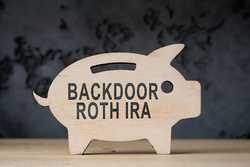A 529 plan or a custodial account, such as an UTMA or UGMA account, are excellent ways to save money for college expenses for a minor beneficiary. All three can be a good fit depending on your situation.
Whether your sole objective is to fund a child’s education—or if you want greater flexibility regarding allowable expenses—is another factor to consider in choosing the right option for contributing to a minor beneficiary’s future. Here is more information about these options to help you decide on the best path.
What is an UTMA account?
UTMA is an acronym for the “Uniform Transfer to Minors Act.” An UTMA account is a type of custodial account that any adult can fund for the benefit of a minor beneficiary. The UTMA rules allow a minor beneficiary to receive gifts without the aid of a guardian or trustee. The law replaces and extends the provisions of the Uniform Gift to Minors Act (UGMA).
An UTMA account is usually opened and managed by a parent or family member. Once the minor beneficiary reaches an age designated by their home state (usually their majority but not always), the account comes under their control.
How to use UTMA accounts
While paying for college is a common reason for an UTMA account, it can be used for a variety of purposes as long as the expenditures are for the benefit of the minor beneficiary. It can also be used to pass assets to a child that will become theirs upon adulthood. A custodial account of any sort can be less expensive and complicated than using a trust to do this.
The UTMA superseded the UGMA in part to expand the range of eligible investment assets. The UGMA limited financial investments to traditional ones, such as stocks, bonds, mutual funds, exchange-traded funds (ETFs), and cash, while the UTMA allows investments in what are called “real” or “tangible” assets, such as real estate, collectibles, jewelry, precious metals, oil and gas, and other alternatives.
Additionally, UTMA accounts can accept contributions from estates; UGMA accounts can only accept contributions from living people.
UTMA plans: Pros and cons
Pros:
- Limited restrictions on the use of the funds. The money in an UTMA account can be used for a wide range of expenses as long as they serve the minor beneficiary.
- Broad range of investments. UTMA accounts allow both traditional and tangible investment assets.
- No contribution limits. You may contribute as much money as you want to an UTMA account, though anything above the annual gift tax limit may trigger taxes.
Cons:
- Can affect college financial aid. Money held in an UTMA account can trigger financial aid issues for the account beneficiary, as this money ultimately reverts to their ownership and control.
- Possible tax consequences on earnings. Money held in an UTMA account can result in taxes on the minor beneficiary and/or the account custodian.
- No financial restrictions once the beneficiary assumes control. Money in an UTMA account eventually comes under the control and ownership of the beneficiary, who can use it in any way they see fit, even if it goes against the wishes of the former custodian.
What is an UGMA account?
An UGMA account is a type of custodial account that is very similar to an UTMA account. There are two main differences. First, an UGMA account cannot invest in tangible assets. Second, money can only be donated by living persons. In contrast, UTMA accounts allow contributions from estates.
How to use an UGMA account
The uses of an UGMA account are identical to those of an UTMA account. Any expenditure that benefits the minor beneficiary is allowed, and the funds eventually come under the control of the beneficiary with no restrictions on their usage.
However, UGMA accounts can no longer be opened, having been superseded by UTMA accounts in all 50 states and the District of Columbia.(South Carolina was the last state to do this, in March 2022.) Existing UGMA accounts can continue to be used and funded until the beneficiary is no longer a minor and takes control of the account at the age designated by their state.
UGMA accounts: Pros and cons
Pros:
- Identical to those of UTMA accounts, except that investments in tangible assets are not allowed, nor are contributions from estates.
Cons:
- New accounts can no longer be opened.
What are 529 plans?
A 529 plan is a tax-advantaged savings account designed to amass funds to pay for the college expenses of the account’s beneficiary. Money is deposited into it on an after-tax basis (though some states allow tax deductions for depositors from the state) and is invested inside of the account. The funds grow tax deferred and can eventually be withdrawn tax free, though only for eligible educational expenses.
A 529 plan can be established by anyone who wants to contribute to the beneficiary’s college savings, though the originator is often a parent or another family member. You can even fund a 529 plan for yourself.
How to use 529 plans
A 529 plan is limited to paying for the higher education expenses of its beneficiary (though it has been recently expanded to include K-12 expenses in some situations). Leftover funds can be transferred to a new beneficiary if they are a family member of the original one. If there is money left in the plan that can’t be spent on education expenses for a beneficiary, withdrawing it may trigger taxes and a possible penalty.
529 plans: Pros and cons
Pros:
- Contributions grow tax deferred. Earnings are not taxed as long as the money remains inside of the account.
- Withdrawals are tax free. As long as they are used for qualified educational expenses as defined by the Internal Revenue Service (IRS), withdrawals are not taxed.
- Potential state tax deduction for contributions. This varies from state to state.
- Funds are transferable. Any money left in the account by the original beneficiary can be used for other family members.
- Can be used to pay off student loan debt. This is only allowed up to specified limits, currently $10,000.
- Low impact on financial aid. Accounts owned by parents will have a smaller impact on financial aid than UGMA and UTMA accounts, lowering aid only by 5.64% as opposed to as much as 25%.
- Possible rollover to Roth IRA. Up to $35,000 left in a 529 plan can be rolled over to a Roth individual retirement account (IRA) for the beneficiary.
- Expanded usage. Recent legislation has allowed 529 plans to cover the cost of K-12 school tuition as well as some apprenticeship programs in addition to college expenses.
Cons:
- Possible tax issues on excess funds. Leftover funds can be a problem. If the money is not able to be used to pay for another family member’s educational expenses, withdrawals could result in taxes and penalties.
- Limited spending options. Unlike with UTMA and UGMA accounts, money withdrawn from a 529 plan must be used solely for qualified educational expenses.
UTMA vs. UGMA vs. 529: Comparison chart
|
| Owned by minor beneficiary but controlled by an adult until the beneficiary reaches a preset age | Owned by minor beneficiary but controlled by an adult until the beneficiary reaches a preset age | Owned and controlled by an adult |
| No tax deduction for contributions; Income can generate taxes for beneficiary and/or custodian | No tax deduction for contributions; Income can generate taxes for beneficiary and/or custodian | No federal tax deduction for contributions (some states may have one); Tax-deferred earnings; Tax-free withdrawals for qualified educational expenses only |
| Up to 25% reduction of college financial aid | Up to 25% reduction of college financial aid | Possible 5.64% reduction of college financial aid |
| | | Can be changed to another family member |
| Both traditional and real assets | | |
| Anything spent in service of the beneficiary | Anything spent in service of the beneficiary | Limited to qualified educational expenses as defined by the IRS |
| | | |
Key similarities
UTMA/UGMA and 529
- May be used to save for educational costs for the account beneficiary.
- Contributions are generally made by parents, grandparents, or other family members but can come from anyone.
UTMA and UGMA
- Custodial accounts established for the benefit of a minor beneficiary.
- Assets come under the control of the beneficiary at an age set by the state in which the account is set up (usually the age of majority).
- Expenditures can be made for any reason as long as they are in service of the account beneficiary.
- Contributions are irrevocable.
- Can reduce college financial aid.
- Can trigger tax issues for beneficiary and/or custodian.
Key differences
UTMA/UGMA vs. 529
- UTMA and UGMA accounts are custodial accounts; 529 plans are not.
- UTMA and UGMA accounts are opened at brokerage firms or other financial institutions; 529 plans are opened at the offering firm.
- Wide range of possible investments for UGMA and UTMA accounts; 529 plans limited to investments offered by the provider.
- UTMA and UGMA account expenses must be in service of the beneficiary; 529 plan expenses must be for qualified educational expenses as defined by the IRS.
- Earnings in an UTMA or UGMA account are subject to taxes; earnings in a 529 plan grow tax deferred.
UTMA vs. UGMA
- UTMA accounts can invest in traditional and tangible assets; UGMA accounts are limited to traditional assets.
- UTMA accounts can accept donations from estates; UGMA accounts cannot.
- UTMA accounts can be opened in all 50 states and the District of Columbia; UGMA accounts can no longer be opened, but existing accounts continue to operate until the beneficiary assumes control.
When is an UTMA or UGMA account better than a 529 plan?
An UTMA or UGMA custodial account can be the better choice if you want fewer restrictions on how the money can be spent, greater investment flexibility, and don’t care how the money is used once the beneficiary assumes control of the account.
When is a 529 plan better than an UTMA or UGMA account?
A 529 plan is better if you want to strictly limit the use of the money to paying for education expenses. It’s also better if you think you may want to transfer leftover funds to another beneficiary (you can’t change the beneficiary for UTMA/UGMA accounts). The money in the account also grows tax deferred, which is not the case for UTMA/UGMA accounts.
Alternatives to UTMA, UGMA, or 529 plans
There are a number of alternatives to UTMAs, UGMAs, and 529 plans. These include:
- A Roth IRA. This is an option for a teenager who has earned income. Contributions to a Roth IRA can be withdrawn at any time tax free to use however you wish, including for education expenses. Any funds that remain continue to grow for retirement along with future contributions.
- A brokerage account. This offers a wide range of investment options that can be used to save for college or pay for other expenses without restriction. In some cases the assets in the brokerage account can count against your child for financial aid purposes.
- A trust. If the objective is to transfer assets to a minor child, a trust can offer a more formalized option than a custodial account. It provides the person who establishes it with greater control over the future use of the money, but it is more complex and expensive to set up.
TIME Stamp: Choose between an UTMA account or a 529 plan based on your goals
The best option for your minor beneficiary will vary based on your goals and situation. A 529 plan offers a number of tax advantages and less of an impact on the beneficiary’s eligibility for financial aid. An UTMA account offers greater flexibility in terms of both available investments and eligible expenses. UGMA accounts don’t factor into the equation, as they can no longer be opened.
If your goal is to transfer assets to a minor beneficiary that they can use in adulthood, UTMA accounts and 529 plans are less complex and more economical than a trust, but they feature less future control of the funds.
Frequently asked questions (FAQs)
Can I convert my UTMA or UGMA account to a 529 plan?
While you cannot convert an UTMA or UGMA account directly to a 529 plan account, you can withdraw funds from one and then deposit them into a 529 plan for the same beneficiary. The process could trigger taxes on unrealized gains on investments in the UTMA or UGMA account for the minor beneficiary and/or their custodian.
Do UTMA and UGMA accounts grow tax free?
No. Income generated by these accounts can be taxable to the minor beneficiary and/or their custodian. This taxable income could come from interest, dividends, or capital gains.
Is a 529 plan better than a custodial account?
One is not better than the other. Which you choose depends on your financial goals.
Is there a limit to how much I can contribute to an UTMA or UGMA account?
No. However, the annual gift tax exclusion does apply, so you might incur taxes on your contribution. For 2024 the limit is $18,000 per person, while the lifetime gift and estate tax exclusion is $13.61 million per individual.
The information presented here is created by TIME Stamped and overseen by TIME editorial staff. To learn more, see our About Us page.





